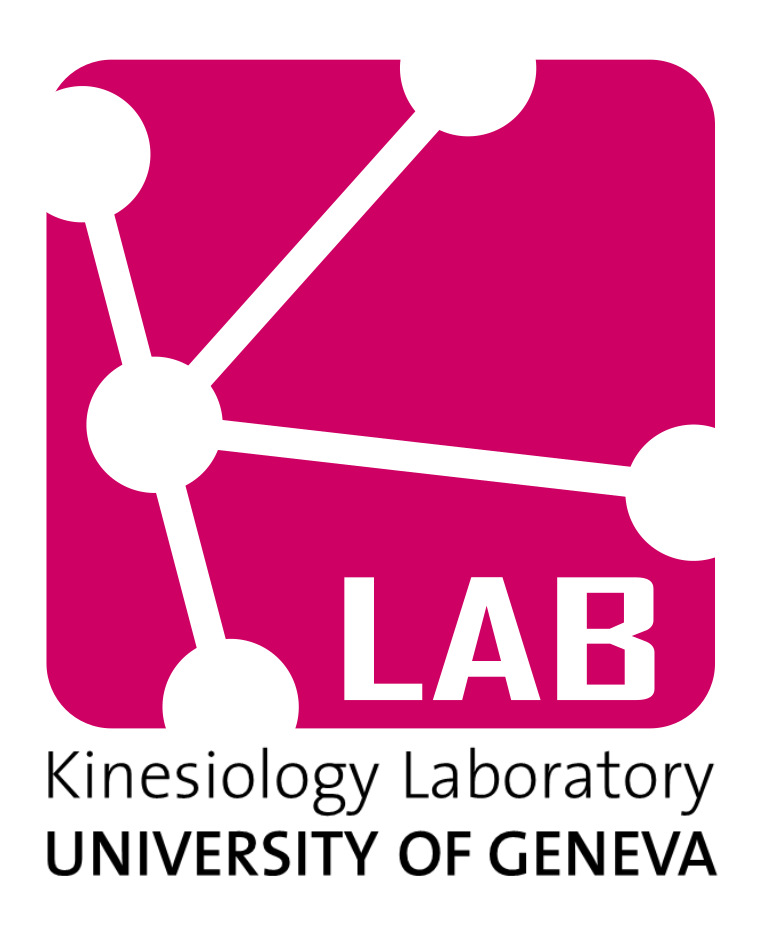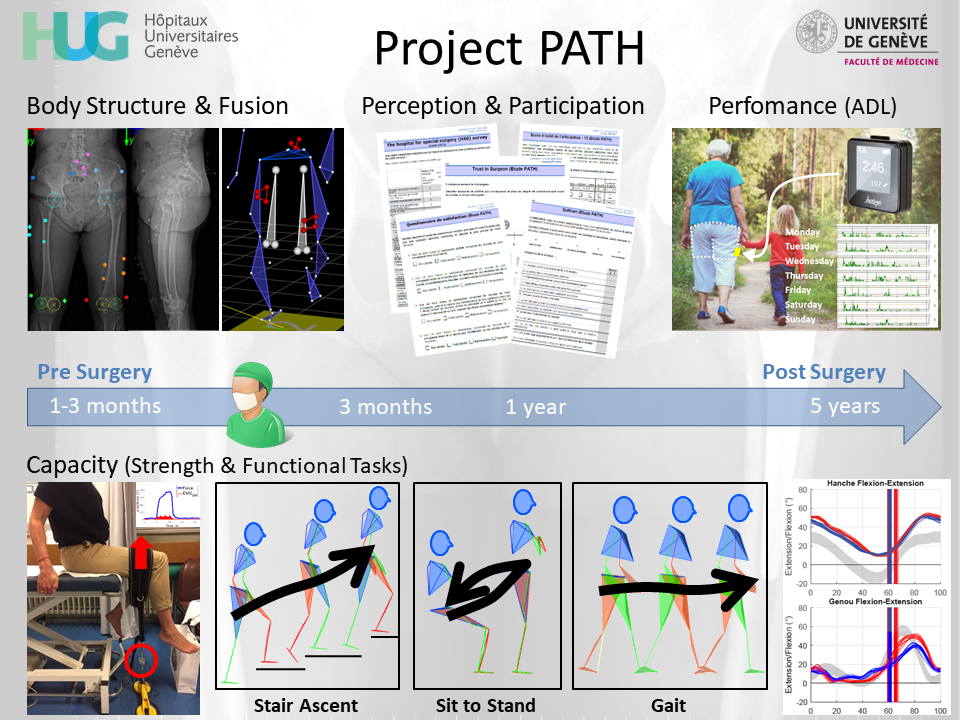Projects
PATH Project

|
PATH Project |
| Title | Pre- and post-surgery success criteria of functional outcome in total hip arthroplasty |
| Dates | CCER authorisation in December 2017, 1st patient in February 2018 |
| Principal investigator | Didier Hannouche (UNIGE/HUG) |
| Other investigators | Xavier Gasparutto (K-Lab, UNIGE/HUG), Stéphane Armand (K-Lab, UNIGE/HUG), Kevin Rose-Dulcina (K-Lab, UNIGE/HUG) |
| Institutional collaborations | Centre Hospitalier Universitaire de Dijon (Davy Laroche, Mathieu Geugnon) |
| Funding | “Fondation pour la recherche ostéo-articulaire” of Geneva |
| Keywords | Total Hip Arthroplasty; Function; Gait analysis; Activities of daily living; Bi-plane X-rays |
| Website | Not available. |
| Related articles |
|
Abstract
Total hip arthroplasty (THA) is a highly successful, common and cost-effective surgical procedure to alleviate pain and restore function. Per year, more than 1 million patients are operated worldwide but the ageing population, obesity epidemic and increasingly younger target population might double the incidences within the next two decades. Significant advances in implant technology and surgical procedure result in excellent short-term and long-term outcomes. However, while 90% of the patients are satisfied with their surgery, less than 50% of the patients have all their expectations fulfilled after hip replacement (Geneva Joint Arthroplasty Registry, 1996-2015). This issue is largely due to function impairments (as defined by the WHO’s ICF), indeed, the restoration of function after THA has been consistently reported as the most important expectation of patients pre-surgery.

Thus, the main objective of this project is to identify the most relevant pre and post-operative determinants (in terms of medical imaging, clinical data and personal factors) of functional outcomes (in terms of capacity, performance and self-perceived function) after both primary and revision THA. The secondary objective is to relate different but complementary functional outcome domains (capacity, performance, self-reported function) in order to shed light on the association between these domains.
